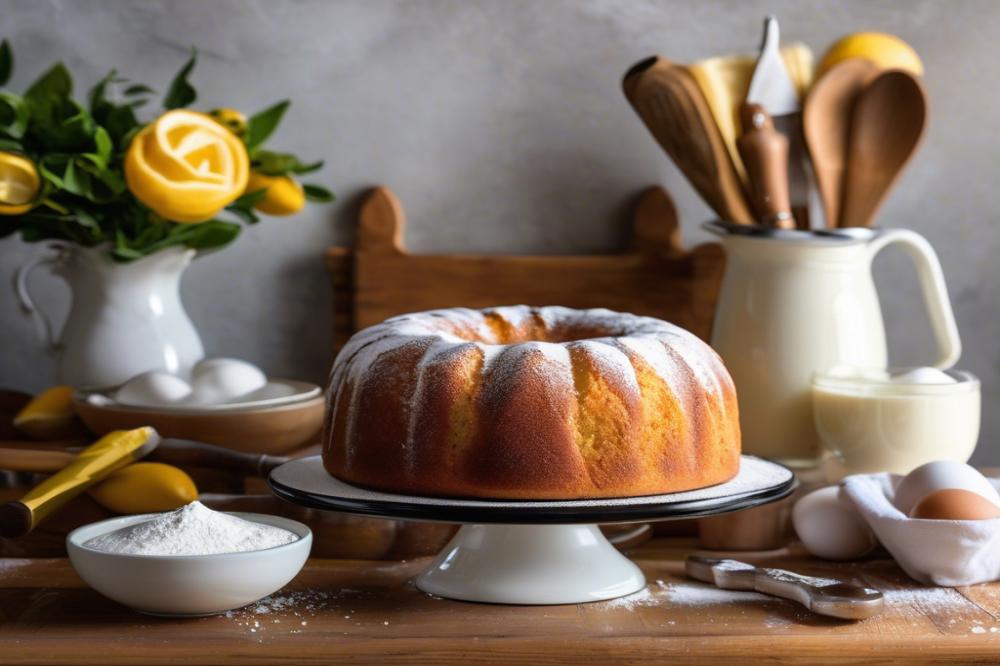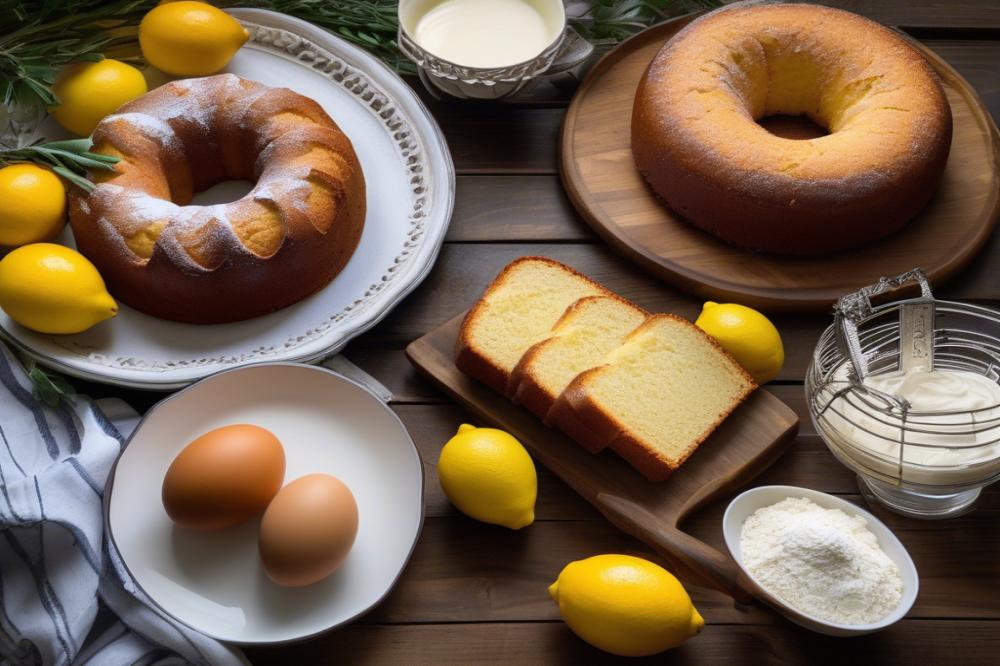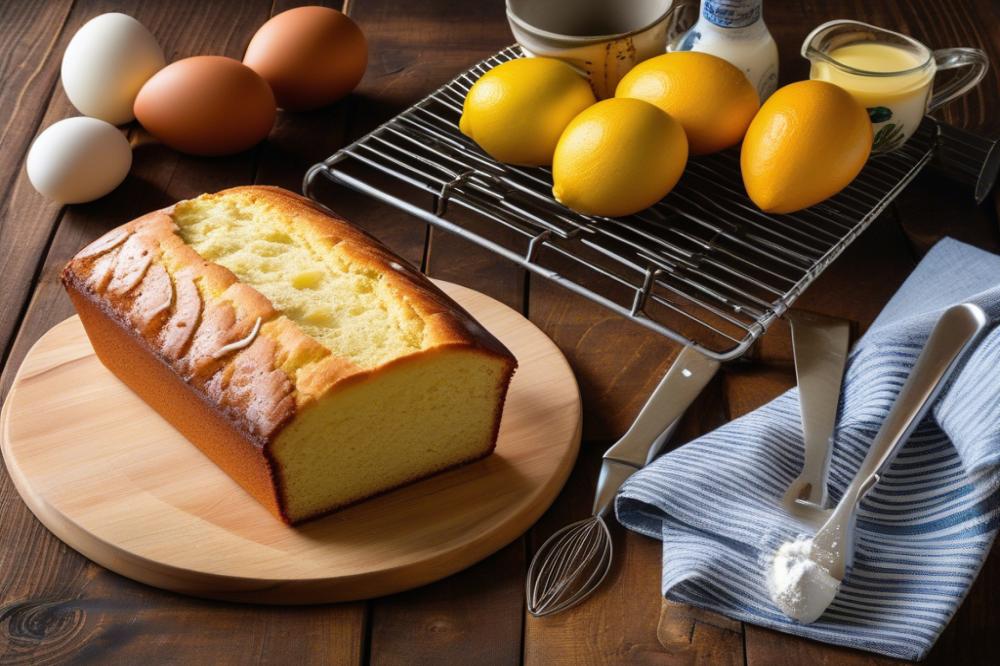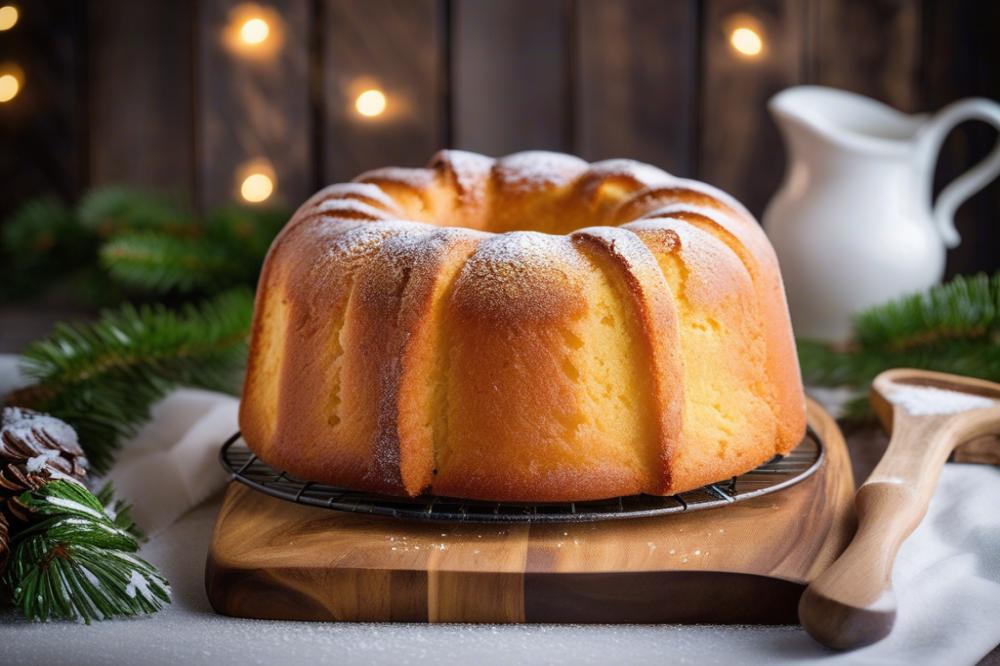Introduction
Italian baking is known for its rich tradition and deep roots in history. Many families hold onto recipes passed down through generations. This practice creates a unique connection to the past. Baking embodies the spirit of Italy, uniting flavors, techniques, and local ingredients. One such beloved treat is the Ciambella Ring Cake, which serves as both a delightful dessert and a satisfying breakfast cake.
Ciambella is more than just a cake; it represents the heart of Italian pastry culture. Many enjoy it alongside coffee or tea, making it a perfect addition to morning routines. This versatile cake can be served plain or decorated with icing and fruits. Its simplicity and flavor make it a favorite among many. Families often gather to bake this traditional recipe together, turning a simple recipe into a cherished ritual.
In Italian culture, homemade family recipes hold significant importance. These creations reflect love and shared experiences. They bring everyone together, fostering connections and memories. Each bite of Ciambella Ring Cake carries a story, blending nostalgia with taste. Italian desserts, like this cake, celebrate life’s moments, big and small.
The Tradition of Ciambella

Historical Background of Ciambella in Italian Cuisine
Ciambella has roots deep in Italian culinary history. This delightful dessert is often seen as more than just cake; it’s part of a cultural heritage. Originally, this sweet ring shaped cake was made by families using simple ingredients. Flour, sugar, eggs, and the occasional flavor such as lemon zest were common. Traditionally, ciambella is not overly sweet, making it suitable for various meals. Generations of Italian home bakers have passed down their family recipes, keeping the tradition alive.
Variations of Ciambella Across Different Regions of Italy
Different regions in Italy have their own spin on ciambella. In Tuscany, you might find a ciambella made with wine, known as “ciambellone al vino.” Meanwhile, in Sicily, bakers often add unique flavors like almonds or citrus. Each area takes pride in its variations, reflecting local customs and available ingredients. Some bakers create a more cake-like texture, while others keep it close to a bread. Regardless of the region, every interpretation remains rooted in the traditions of Italian pastry.
Significance of Ciambella During Festive Occasions and Family Gatherings
Ciambella holds a special place at festive occasions and family gatherings. Many families serve this cake for breakfast or as a light snack during the day. Homemade ciambella often appears on tables during celebrations, such as birthdays or holidays. Sharing this dessert brings people together and creates warm memories. For many, it symbolizes love and togetherness, helping to keep family ties strong. Whether enjoyed plain or with a side of jam, ciambella enriches the Italian experience of food and family.
Ingredients List and Cooking Instructions

Ingredients
For this delightful traditional Italian ciambella ring cake, gather the following ingredients:
- 2 cups all-purpose flour
- 1 cup granulated sugar
- 1/2 cup unsalted butter, softened
- 3 large eggs
- 1 cup milk
- 1 tablespoon baking powder
- 1 teaspoon vanilla extract
- Zest of 1 lemon
- A pinch of salt
Cooking Instructions
Begin your baking journey by preheating the oven to 350°F (175°C). Prepare a bundt pan by greasing it lightly. This will help the cake release easily after baking.
Next, combine the dry ingredients in a medium bowl. Mix together the flour, baking powder, and a pinch of salt thoroughly. This step helps ensure that the baking powder distributes evenly throughout the cake.
In a larger bowl, cream the softened butter and sugar together. The mixture should appear light and fluffy. This is an important step that adds air into the batter, creating a light texture.
To this creamy mixture, add the eggs one by one, mixing well after each addition. Then, pour in the milk and vanilla extract. Keep stirring until everything is fully combined.
Now, fold in the lemon zest gently. This citrus touch will provide a fresh flavor that enhances the sweetness of the dessert.
Pour the batter into the prepared bundt pan. Use a spatula to smooth the top if desired. The dough should fill about three-quarters of the pan to allow for rising.
Place the pan in the oven and bake for 30-40 minutes. Check for doneness by inserting a toothpick into the center. If it comes out clean, your ciambella is ready. Otherwise, allow it to bake a little longer.
Once baked, allow the cake to cool in the pan for about 10 minutes. After that, transfer it to a wire rack to cool completely. This cake is perfect for breakfast or as a dessert. Serve it plain, or dust it with powdered sugar for an elegant touch.
Nutritional Information

Understanding the nutritional profile of a traditional Italian ciambella ring cake is important for anyone looking to indulge mindfully. Each serving typically contains around 200-300 calories, depending on the specific ingredients and portion size. Sugars can range from 10 to 15 grams, often coming from natural sources like honey or fruit, and additional sweeteners used in the recipe. Fats in the cake are usually around 8 grams, primarily from eggs and any added oils or butter.
Considering the protein content, a slice offers approximately 3-5 grams. Carbohydrates usually amount to 30-40 grams per serving, largely attributed to flour and sugar. This dessert is rich in simple sugars, which can cause a rapid spike in blood sugar levels. Eating sweets occasionally is fine, but it is crucial to balance them with healthier foods to maintain good health.
Health Considerations
When indulging in desserts like this Italian pastry, moderation is key. Frequent consumption of high-sugar treats may lead to weight gain or other health issues. A single serving is sufficient to satisfy cravings without overwhelming the body with excess calories and sugars. Enjoying a piece with your morning coffee or as an evening snack can be a delightful experience. However, consider how often you incorporate treats and the impact on your overall diet.
Healthier Ingredient Alternatives
Making simple substitutions can enhance the health profile of your homemade ciambella. For a start, swapping all-purpose flour with whole wheat flour will add fiber, contributing to better digestion. Using unsweetened applesauce instead of oil or butter reduces fat while adding moisture. For sweetening, consider natural options like maple syrup or stevia. These alternatives help decrease refined sugars while maintaining a flavorful cake. Experimenting with these adjustments can create a breakfast cake that is just as satisfying but healthier too.
Serving Suggestions and Variations
Traditional Ways to Serve Ciambella
Ciambella is often enjoyed as a sweet breakfast cake. Traditional Italian families serve it at breakfast tables, paired with fruit or yogurt. Slices can also be offered as a light dessert after lunch or dinner. Dusting the cake with powdered sugar adds a simple yet elegant touch. It can be sliced into generous portions or served in smaller pieces for sharing.
Pairing Ciambella with Beverages
This cake pairs beautifully with coffee or tea. A robust Italian espresso brings out the flavors of the ciambella. For those who prefer a lighter drink, a fragrant herbal tea works well too. Some might even enjoy it alongside a glass of fresh orange juice. The combination creates a delightful experience for any time of day.
Popular Variations and Flavor Additions
Creativity shines with ciambella when considering flavor variations. Adding chocolate chips can introduce a rich taste, pleasing chocolate lovers. Nuts, such as almonds or walnuts, give a crunchy texture that complements the softness of the cake. Incorporating fresh fruits, like berries or citrus, adds a refreshing twist. Experimenting with these ingredients can transform the traditional recipe into something unique.
Ideas for Festive Presentations
When it comes to celebrations, presentation matters. A ciambella can be adorned with fresh fruits or edible flowers for a vibrant look. Drizzling melted chocolate on top provides a festive touch for special occasions. Using decorative serving platters can enhance the visual appeal. A homemade cake looks more inviting when displayed properly, making every gathering feel special.
Final Thoughts on the Ciambella Ring Cake
The ciambella has a special place in Italian culture. Its roots run deep, connecting generations through shared family recipes. This cake is not just a dessert; it represents comfort and togetherness. Traditionally enjoyed during festivals or special occasions, it brings an element of joy to any gathering.
Trying out this simple recipe at home can be both fun and rewarding. Baking allows creativity, and the Ciambella Ring Cake is a great starting point. The ingredients are easy to find, and the steps are manageable. Everyone can participate in the process, making it a delightful activity for families to enjoy together.
Sharing your homemade Italian pastry with loved ones is rewarding. The joy of presenting a freshly baked breakfast cake is unmatched. Friends and family will appreciate the effort, and each slice can spark conversation about traditions and memories. Homemade treats often taste better because of the love and effort put into them.
As you explore the world of baking, remember that every family has its variations of this cake. Whether you make it plain or add your twist, the essence remains the same. Enjoy the moment, and savor each bite with those who matter most.
Embracing the Sweet Heritage of Italian baking
Italian baking is renowned for its rich flavors and diverse techniques. The culture of baking in Italy has deep roots and offers a wide variety of cherished recipes. This tradition embraces fresh ingredients and the artistry of skilled bakers. Each region boasts its specialties, making Italian baking not just a craft but a celebration of food that reflects local customs and history.
A standout in this culinary tradition is the Ciambella Ring Cake, which symbolizes togetherness and joy. This delightful dessert transcends mere taste; it strengthens bonds among family and friends. Sharing this cake during gatherings sparks conversations and laughter, creating memorable experiences. Each bite invites warmth and fosters connection, making it an ideal centerpiece for any occasion.
Exploring more traditional recipes can be an exciting journey. From classic tiramisu to the zesty lemon ricotta cake, the world of Italian Desserts is vast and inviting. Each recipe tells a story and embodies a piece of Italy’s rich culture. Whether you’re baking for a special occasion or simply indulging your sweet tooth, there’s always something new to discover. Dive deeper into the enchanting world of Italian baking and experience the flavors that have united generations.

